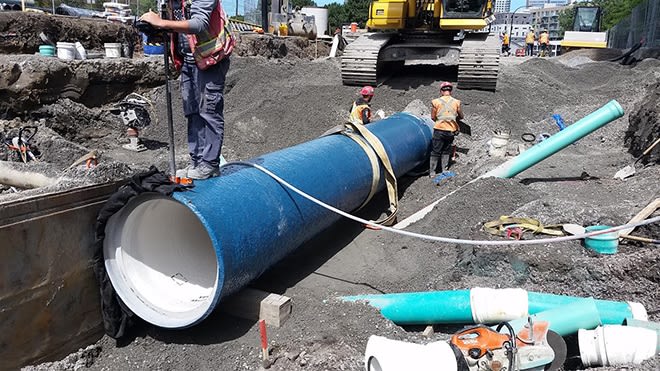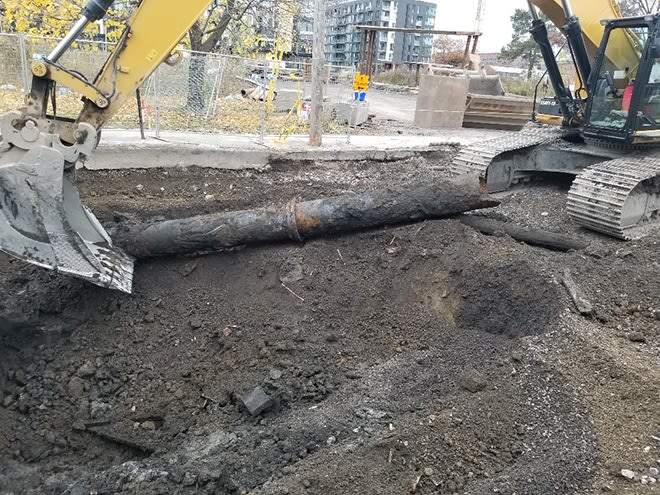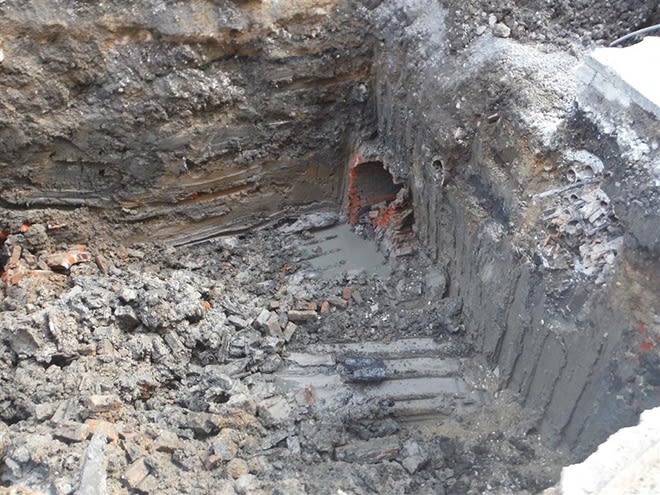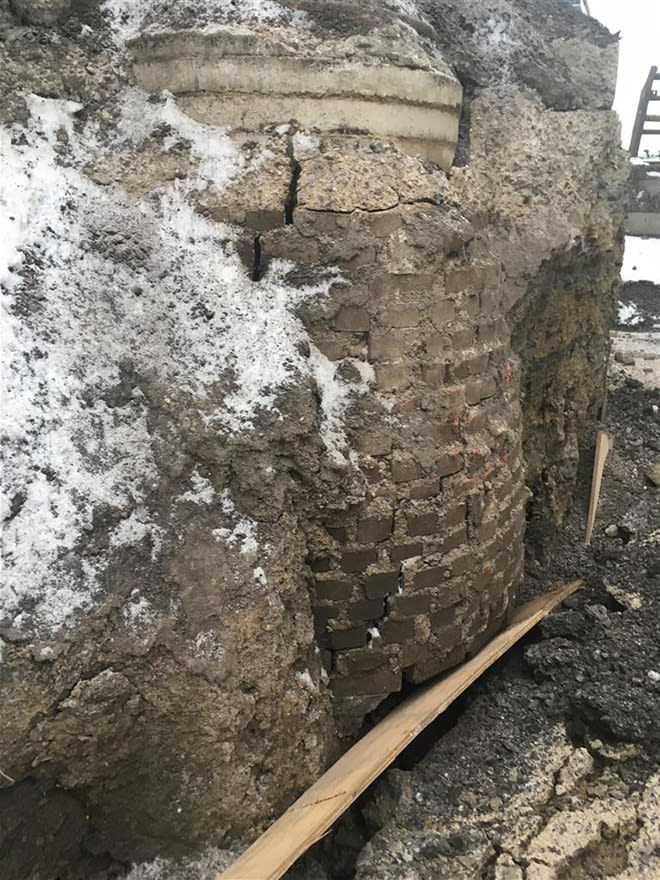Reconstruction of underground infrastructure in Griffintown
Last updated May 27, 2021
Reading time: 2 min
Related to
Several infrastructure reconstruction projects are planned for Griffintown during the coming years. They will affect waterlines and sewers, as well as Hydro-Québec, Énergir and telecommunications networks.
Planning of work
- Priority is given to streets where property development is very advanced or completed
- Then, streets containing collectors (large-diameter sewer lines where several private local sewer lines converge) will be given priority, since these facilities are the deepest underground
- Other infrastructure, which is closer to the surface, will be reconstructed later, including main and secondary water supply networks, conduit duct banks for electricity and telecommunications, gas lines, chilled-water lines, etc.
- In general, undergrounding of overhead networks will occur at the same time that municipal infrastructure is replaced (water and sewer lines) or at the time of street construction work. This will mean city construction work will be conducted in sections, following deployment of the electricity network.
Optimal work sequencing (if conditions allow):
- Sewer and drinking water lines: fall
- Conduit duct banks and accessways: winter
- Road surface work, undergrounding of wires: spring-summer
Work coordination
An operations coordination committee (comité de coordination opérationnelle, COP) of all partners active in Griffintown will meet every two weeks during the construction work period.
An operations coordination committee (comité de coordination opérationnelle, COP) of all partners active in Griffintown will meet every two weeks during the construction work period.
Objectives
- Ensure that obstructions will be coordinated
- Organize closures of certain streets
- Develop mitigation measures for the entire district: optimizing of traffic signals, changes to street directions, etc.
- Coordinate traffic signs and variable message signs
- Optimize police presence
- Carry out on-site monitoring
Composition
- The city
- Réseau express métropolitain (REM)
- Commission des services électriques de Montréal (CSEM)
- Property developers
- Énergir
- Hydro-Québec
- Montréal police (SPVM)
- Montréal fire department (SIM)
- Mobility squad
- Sud-Ouest borough
The project step-by-step
Reconstruction of pipelines
- Replacement of old pipelines with new infrastructure
- Reconstruction of pipes will take several months and the street will have to be excavated
- Connection of properties to temporary drinking water and sewer lines
- Water supply interruption necessary at reconnection
- Useful life: a hundred years
Repair of pipelines
- Insertion of a ‘sleeve’ inside the pipes to extend their useful life
- Possible only if pipes are not excessively damaged
- Duration of work: about six-eight weeks for a typical waterline segment; about one week for a sewer line
- Minimal excavation for sewers and greater excavation (locally) for the drinking water line
- Useful life: 50 years
- Technique used in Griffintown only in case of emergencies, prior to implementation of PPU (Griffintown’s special urban planning program), i.e. from 2009 to 2014, approximately
Accessways

Access chamber for the CSEM and Bell networks (lampposts, traffic lights, etc.)
Conduit duct banks

- Concrete structure that houses PVC tubes containing Hydro-Québec, Bell and telecommunications wiring, etc.
- Generally located below the sidewalk
Examples of obsolete infrastructure in Griffintown
Need help?
Contact us if you have questions.
Are you sure you want to leave this page?
This page is not available in English. You will be redirected to the English home page.






